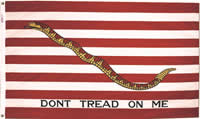
The USS Constitution, “Old Ironsides,” was one of six original frigates built by the US Navy. The wooden-hulled, three-masted frigate was built of live oak and red cedar. The best white oak and pitch pine was used and the materials were provided from Georgia, Massachusetts, and South Carolina. Her bolts were forged in Paul Revere’s foundry. Talk about a floating piece of history! She was commissioned in 1794, built in Boston, and was launched in 1797. She sailed in the West Indies from 1798 to 1801, capturing 3 small vessels.
The young US Navy could ill afford the larger ships of the line and they did not bother to try. Instead, the six new ships were designed as heavy frigates – a little larger, a little heavier gunned – than most European frigates. The upshot of this is that they would, depending on the fortunes of war, be able to defeat most other frigates one-on-one, but would be able to outrun any ships of the line they had the misfortune to run into. Of the six ships, the Constitution had a much more storied life and earned a place in the hearts of the American people.
While she was under the command of various officers over the years, we must note that Rear Admiral Oscar F. Stanton, born in Sag Harbor, commanded USS Constitution 1879 to 1881, during which time it was a training ship. Admiral Stanton’s forefathers fought and protected these waters during the Revolutionary war.
Constitution, under the command of Captain Isaac Hull, fought the British frigate Guerriere – yes, they had “borrowed” the ship from the French some years earlier, but kept the name – on August 19 1812 off Montauk Point. Or Halifax, if you prefer, but we will stick with Montauk. It was said that, within 15 minutes, the Constitution took down the mizzen mast of the Guerriere. This mostly perturbed the British. Within a half an hour, the ship was a wreck.
“Huzzah! my Boys, we’ve made a brig of her!”
That is how early nineteenth-century men expressed excitement. Apparently. We also expect that there was some cussing. On both sides. You know, like sailors. But after one cannonball had bounced “harmlessly” off the side of Constitution during the battle, a crew member is said to have, quite famously, yelled “Huzzah! Her sides are made of iron!” Hence the nickname.
More than a century later, after more battles, many refits, many missions, and generations of cussing navy sailors, in 1931, the USS Constitution returned to Montauk.
The Constitution was fresh out of drydock at the Boston Navy Yard, where it had been restored over the course of four years, when it sailed directly to Montauk. Both the summer folk and the locals were thrilled to welcome this historic vessel. The public was invited and relatives and friends of Rear Admiral Stanton who sailed the frigate in our waters 50 years ago, joined the many visitors to welcome this piece of history. School children from all over our island were especially encouraged to attend.
So how exactly does this tie to our history? Well, while perusing a photo album which found its way to our archives, we discovered at least one local family made the journey – and yes in 1931 it would have been a bit of a hike – to Montauk for this celebration. Who exactly placed these photos in this album has been lost to time.
Today, the Constitution rests in Boston Harbor, a museum ship, but still commissioned in the US Navy, the oldest commissioned vessel afloat. From time to time, for special events, they take her out to sea.
If you want to get an idea what life would be like on such a vessel in the early Nineteenth Century, we can highly recommend the 2003 film, Master and Commander, which details the adventures of a British frigate during the Napoleonic Wars. The enemy frigate in the movie is French, of course, but they based the design of this heavy frigate on the USS Constitution. Part of the reason for this is because, in the book that the movie is based on, the enemy was an American vessel, fighting in the War of 1812. We guess they decided that making *that* movie would hurt ticket sales.
